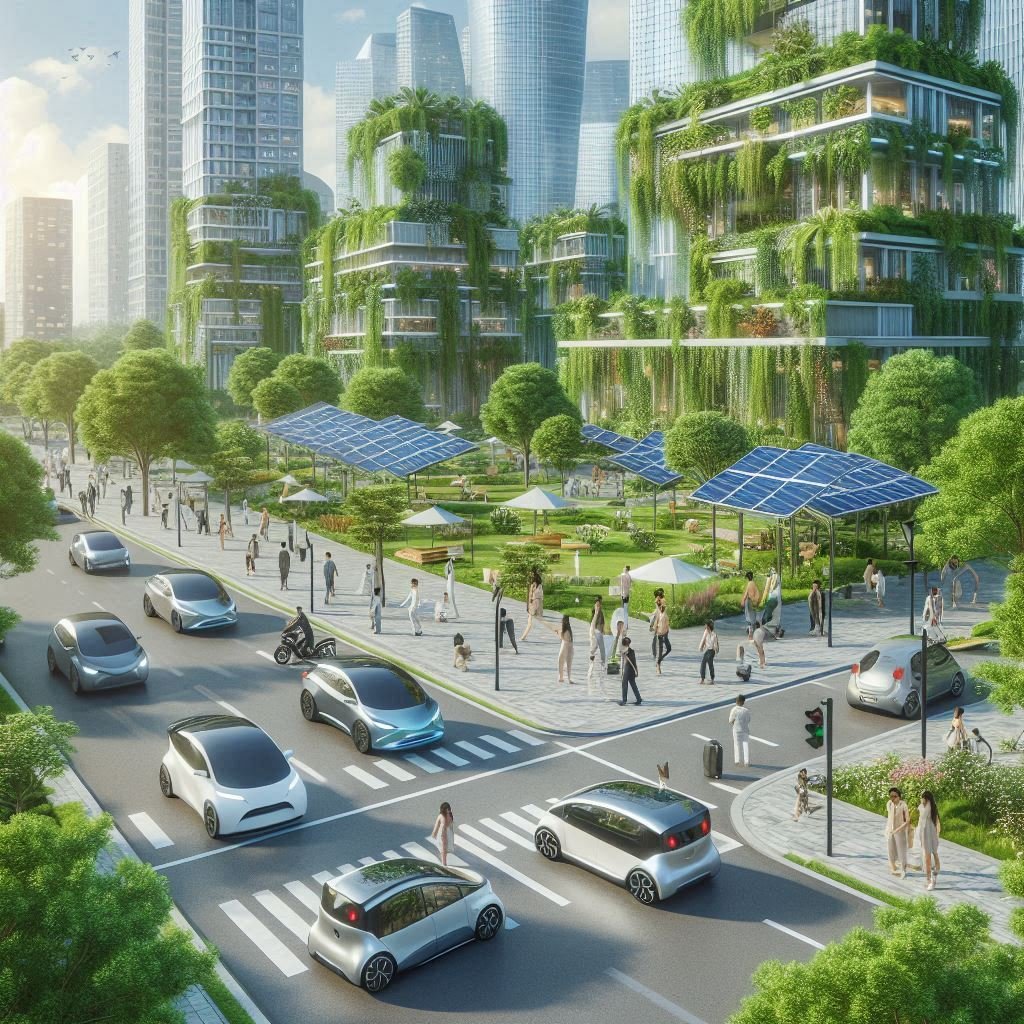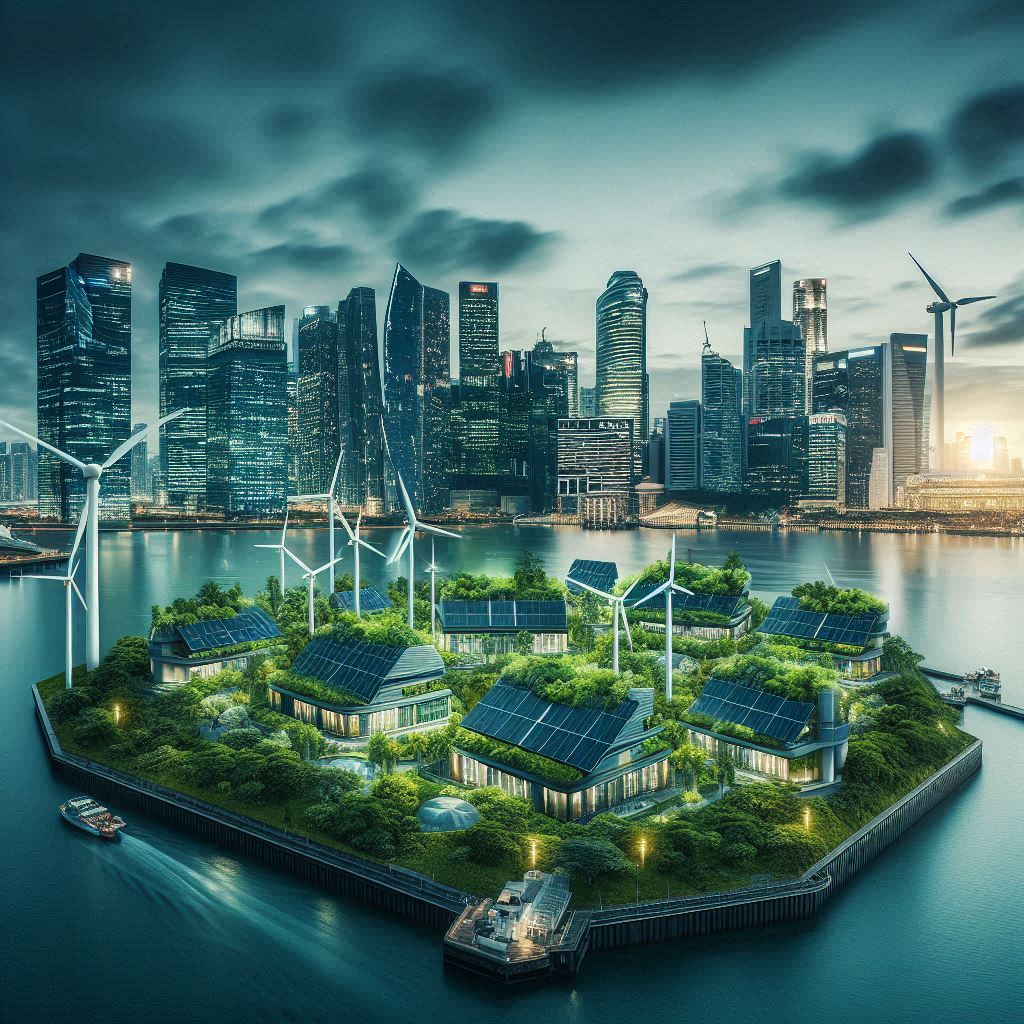Green Tech Revolution
How Sustainable Innovation is Reshaping Our Future
The Changing Landscape of Green Technology
The world of green technology has transformed dramatically over the past decade. What once existed as fringe innovations now stands at the center of global business strategy. I remember visiting a solar farm back in 2015—just a handful of panels in an experimental setup. Last month, I toured one that powers an entire town.
This transformation didn’t happen overnight. It resulted from a mix of necessity, innovation, and shifting consumer demands.
Green technology—solutions designed to protect our environment while meeting human needs—has moved from alternative option to economic powerhouse. The numbers tell the story: the global green technology market reached $13.76 billion in 2022 and is projected to hit $51.09 billion by 2032.
Beyond Solar: Today’s Green Tech Landscape
Most people think “solar panels” when they hear green tech. That’s just the beginning.
Today’s green tech includes:
- Smart grid systems that reduce energy waste
- Carbon capture technologies pulling CO2 directly from the air
- Plant-based plastics replacing petroleum products
- AI-powered energy management for buildings
- Water purification systems using minimal chemicals
“Green tech isn’t just about energy anymore,” says Jamie Chen, founder of GreenStart Ventures. “It’s about rethinking how we make, use, and reuse everything.”
Green tech has quietly entered our daily lives. Your phone likely has parts made from recycled materials. The building where you work might use smart windows that tint automatically, saving on air conditioning. These innovations happened without most people noticing.

What’s Driving the Revolution?
Three forces power this revolution:
First, economics has shifted. Renewable energy now costs less than fossil fuels in many markets. A report from Lazard shows that solar and wind energy have become the cheapest sources of new electricity generation in many parts of the world, even without subsidies.
Second, climate pressure intensifies. Extreme weather events have made climate change impossible to ignore. Businesses face pressure from consumers, investors, and regulators to reduce their environmental impact.
Third, technology breakthroughs continue at an accelerating pace. Battery technology has improved exponentially, making electric vehicles practical. Artificial intelligence optimizes energy use across the grid.
Industries in Transformation
Green technology reshapes entire industries:
Transportation
Electric vehicles represent just the start. Companies like Arrival build electric delivery vans with 50% fewer parts than traditional vehicles. Hybrid planes, hydrogen-powered ships, and electric scooters reshape how we move.
I test-drove an electric car last year that went from 0-60 in under four seconds. The quiet acceleration felt like science fiction. Now these vehicles dominate many urban areas.
Construction
Buildings account for nearly 40% of global CO2 emissions. New construction materials change this equation:
- Self-healing concrete that reduces replacement needs
- Transparent wood that could replace energy-intensive glass
- Walls that store and release heat like batteries
- Modular designs that reduce construction waste by 90%
Agriculture
Vertical farms grow crops with 95% less water and no pesticides. Precision agriculture uses sensors and drones to apply water and nutrients only where needed. Lab-grown proteins offer meat alternatives with a fraction of the environmental impact.

The Green Tech Industry: By the Numbers
Understanding the scale of this revolution helps explain its impact:
| Sector | Current Market Size | Projected Growth (5-Year) | Key Players |
|---|---|---|---|
| Renewable Energy | $1.1 trillion | 8.5% annually | NextEra, Ørsted, First Solar |
| Clean Transportation | $640 billion | 22.6% annually | Tesla, BYD, Proterra |
| Smart Agriculture | $15 billion | 9.8% annually | Plenty, AeroFarms, Indigo |
| Green Building | $303 billion | 10.7% annually | View Inc, Kingspan, Interface |
| Water Tech | $82 billion | 6.5% annually | Xylem, Veolia, Evoqua |
Challenges on the Horizon
The green tech revolution faces meaningful hurdles:
Supply chains for critical minerals remain concentrated in few countries. Lithium, cobalt, and rare earths—essential for batteries and electronics—often come from regions with environmental and labor concerns.
Scale presents another challenge. Our existing systems took decades to build. Replacing them requires massive investment and coordination.
Not all technologies deliver on their promises. Hydrogen vehicles, once heralded as the future, struggle with infrastructure and efficiency issues. Some biofuels use more energy to produce than they deliver.
Looking Forward: What’s Next?
The next wave of green tech looks even more transformative:
- Advanced Materials: Scientists develop carbon-negative concrete and plastics that capture CO2 as they harden.
- Fusion Energy: After decades of research, commercial fusion power moves closer to reality, promising unlimited clean energy.
- Regenerative Design: Products designed not just to minimize harm but to restore natural systems.
- AI-Driven Efficiency: Artificial intelligence optimizes everything from traffic flows to building temperature, cutting energy use dramatically.

How You Can Participate
The green tech revolution isn’t just for scientists and corporations. Individuals drive this change too:
- Install a smart thermostat—it pays for itself within months
- Join community solar projects if rooftop installation isn’t an option
- Consider an electric vehicle for your next car purchase
- Support companies prioritizing sustainable practices
What excites me most? The pace of innovation accelerates yearly. Solutions we can’t imagine today will seem obvious tomorrow.
Final Thoughts
The green tech revolution represents one of the most significant economic and social transformations in history. It combines technological innovation, economic opportunity, and environmental necessity.
Unlike many past industrial revolutions that damaged our planet, this one aims to heal it while creating prosperity. That makes it uniquely powerful—and hopeful.
What green technologies have you noticed entering your daily life? Which innovations do you think will make the biggest difference? Share your thoughts in the comments below.
Want to stay updated on the latest green tech breakthroughs? Sign up for our monthly newsletter featuring innovations you can use in your own life and business.

